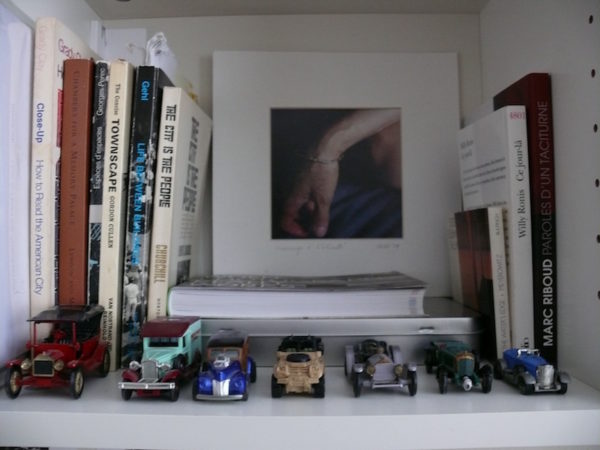About figures
If encounter points are those places and occasions when city life is experienced in a fulfilling way and if experiencing encounter point carries a strong sense of “being here,” then “figures” can be defined as these environmental components/elements expressive of identity: of oneself and/or of others.
These figures, for the sake of this post, come in two types: events such as a private person playing piano in public, or the moving-placing things around the house; and arrangements I.e. the purposeful order, or meaningful traces, resulting of events, as in the feature image.
You may intuitively sense how the example given in the feature image can be expressive of a mildly mischievous act most likely done by school boys out for playing a prank on one of them…shoes don’t grow on trees … but this tree happens to grow near a private school!
The following figures are culled from the public sphere of the street, and from the private sphere of the home.
[alert type=alert-white ]Please consider making a tax-deductible donation now so we can keep publishing strong creative voices.[/alert]
In the street: figures of neighbors and strangers
The “public piano playing” event figure was located near an outdoor sitting area fronting the entrance to a downtown university building. That set the scene for a “private” person to “go public,” and, soon enough a young lady sat at the piano and started playing. As I observed her hands, I could see the visual equivalent of some sonorities by the feathery touch of the left hand and the spread of her right hand fingers … I asked permission to take the photograph of course, and the positive response felt to me like the one of a young person acquiescing to an old person’s request!

The “improvised bike rack” arrangement figure and its reflection in the design boutique shopwindow speaks of the mixed population of students of little means, and of upscale business employees and clients: notice, on one hand, the bike with a plastic milk carton used as rear basket and the strange double saddle where one may not have been sufficient because of size or material state, chained to a parking meter, and on the other, the rather “distingué” treatment of the half basement design boutique (now moved), and the main floor travel agency advertising custom tailored trips with private guides.

The “multitasking break” event figure of the “village grocery” uniformed employee was hard to pass by unnoticed as I approached the store. Something in the “cool” posture with the bag of chips balanced between her legs, her right hand about to go fishing in the bag while her left hand deftly holds her smart phone and scrolls its content, spoke of a part time working university student. Permission to photograph was duly asked of course, and the friendly response was mixed, undoubtedly, with the curiosity of being photographed by someone else than “one-selfie” … curiosity confirmed by her desire to see and approve of the result!

At home: figures of the self
A “family place” arrangement figure is an assemblage of objects that grounds my origins and expresses what I may have become: mother holding me at a few months, the old librarian image from past family front rooms and now in my dining room, a collography and a bibelot duck that show my interest in arts and crafts, a radio and a telephone to be in touch with others, even when alone. The light fixture was found in my apartment when I moved in, a reminder perhaps of the transient nature of my abodes across continents.

A simile “tokonoma” arrangement figure, this wall shelf compartment hangs over a desk in my private quarters and contains an arrangement of what I consider to be “essential” books on photography and environmental design. In the back an intimate photograph, and in front a small collection of miniature cars for counterpoint. The other compartments carry more “essential” books placed there for continuous reference, and in a spirit of near reverence for the writers, thinkers, and artists whose work I have come to identify with personally and professionally.

An “assemblage” arrangement figure of dried plants, handicrafts, photo and dictionaries, under the bemused eyes of Betty Boop, sits on one end of a long shelf that also harbors the rest of my sound system, more bibelots, etc. as events and spurs of moments have contributed to their being placed there. The dried flowers in the cylindrical ceramic pot date from my seventieth birthday … Betty Boop is a gentle ribbing from a dear friend … the two dictionaries belong to the pre-web era, and speak of my age and of the French part of my education!

About the presence of figures
In the public sphere some events were taken “sur le vif”: piano playing and multitasking on a break, and others simply left traces, rather than self conscious arrangements, that speak of the event and suggesting the identity of the actors: a pair of shoes hanging from tree branches and an impromptu bike rack.
In the private sphere some arrangements are spatially and thematically self conscious such as the book shelf compartment-tokonoma at one end, and others are more open ended thematically and spatially, such as the dry plant assemblage. All involve chance backed by desire to mark a territory: unexpected chance or chance guided by repeated visits to effectively express an identity and a growing rootedness in a place of residence.
All of these figures are, however modest, manifestations of encounter points experiences with one’s “lived” life … as such they all point to something essential to one’s identity and/or one’s identification with a place be it a lodging, a neighborhood, or a city.
Credit all images Maurice Amiel
